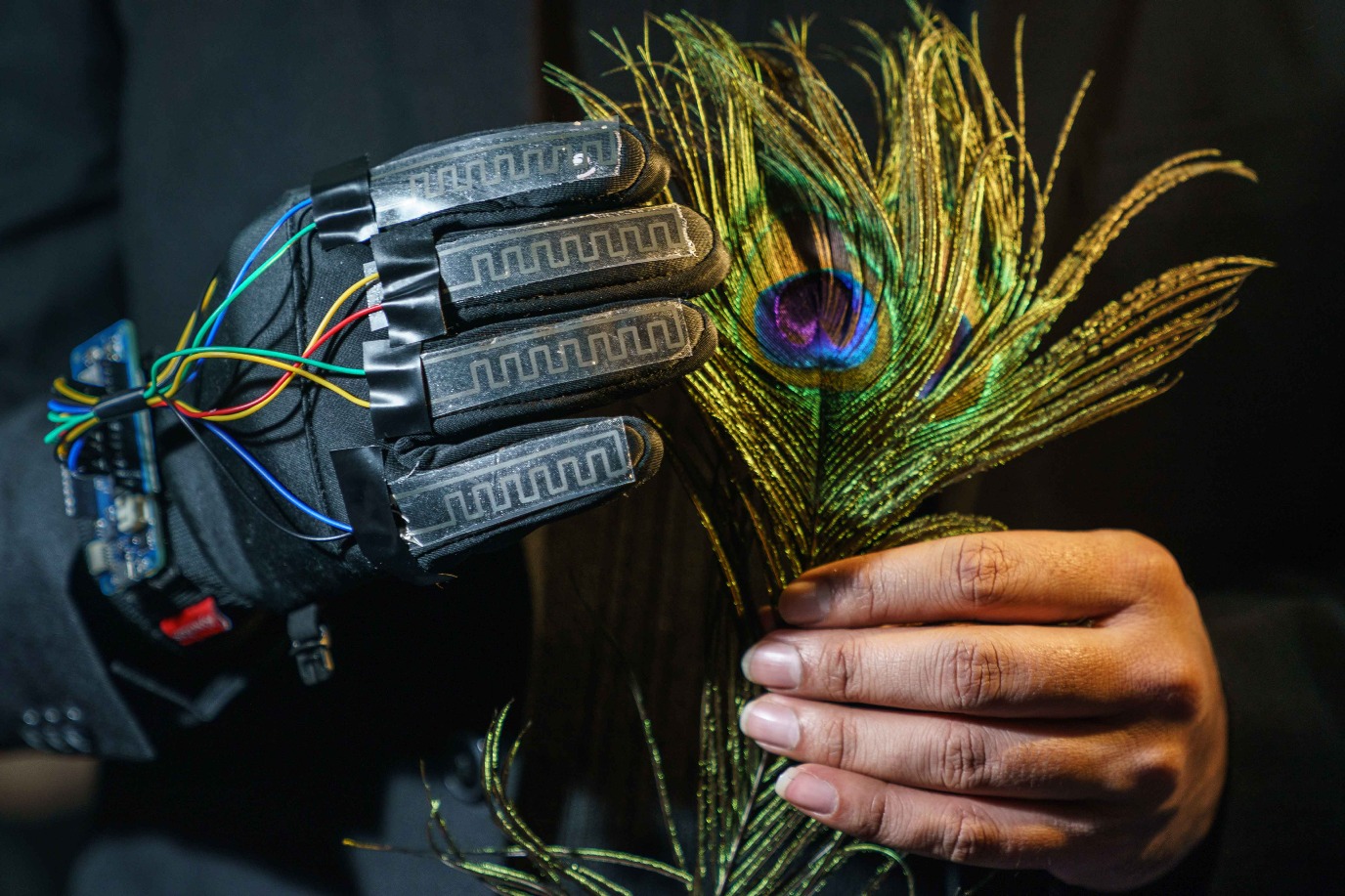Tactile sensors
What if a prosthetic hand or limb could actually feel? At the Engineering and Technology Institute Groningen (ENTEG), Ajay Kottapalli develops bio-inspired sensors that could make this a reality. ‘We create them as wearable electronics.’ Right now, the main application of this technology lies in the use of smart insoles for Parkinson patients, who easily fall over. The insoles can detect dangerous movements and warn them in real time.


The fundamental principle underlying Kottapalli’s sensors are piezo nanomaterials. These respond to pressure by generating a small current, or by changing their electrical resistance. The materials can be woven into fabric, or printed in 2D or 3D. It is even possible to print a sensor on starch paper that is stuck on the skin, as a kind of temporary tattoo. All these wearable sensors are fully biodegradable. ‘We don’t want to add to the e-waste.’
Kottapalli and his team developed tactile sensors, placed in a 3D ‘fingerprint’ structure. This could give amputees a sense of touch. Creating the sensors is done by a mixture of physics and materials. Exporting the signals and analyzing them requires electrical engineering. At this stage, it is not yet possible to transfer the ‘sense of touch’ to a patient’s brain. ‘That would require smart implants, but we can send feedback to muscles. We are working on this with the UMCG.’ Connecting them to a robot is less complicated. The tactile sensors could for example be placed on fruit-picking robots, so they can assess the ripeness of tomatoes or raspberries.
However, several of his medical sensors are almost ready testing in patients, like the smart insoles that measure the gait of patients with Parkinsons disease. Such insoles can also benefit patients with a hip replacement. During rehabilitation, they should be active to stimulate recovery, but not overdo it. The sensors could keep them in the ‘sweet spot’ and so help their recovery.
Text: FSE Science Newsroom | René Fransen
Photos: Reyer Boxem
Every two weeks, UG Makers puts the spotlight on a researcher who has created something tangible, ranging from homemade measuring equipment for academic research to small or larger products that can change our daily lives. That is how UG researchers contribute to the solutions for big scientific and societal challenges.
For decades, engineering teaching and research at the UG has been part of a wide array of strong disciplines, and from a national point of view, our collaboration with the four technical universities is becoming more and more intensive.
Previous portraits of Makers can be found on the overview page .
More information
| Last modified: | 23 May 2024 6.08 p.m. |
More news
-
30 May 2024
Ben Feringa elected member American Philosophical Society
Prof. Ben Feringa has been elected member of the American Philosophical Society (APS)
-
29 May 2024
European joint Master’s degree programmes are among the top programmes
On 27 May, the EACEA in Brussels celebrated the fact that the first Erasmus Mundus Master’s degree programmes were launched twenty years ago.
-
28 May 2024
NWO Summit grant for research into molecular basis of life
RUG researchers partner in NWO Summit grant to research molecular basis of life.
